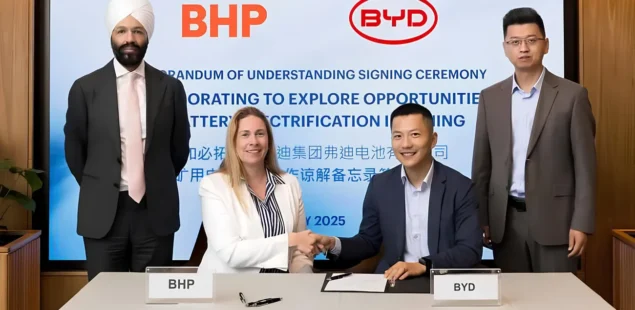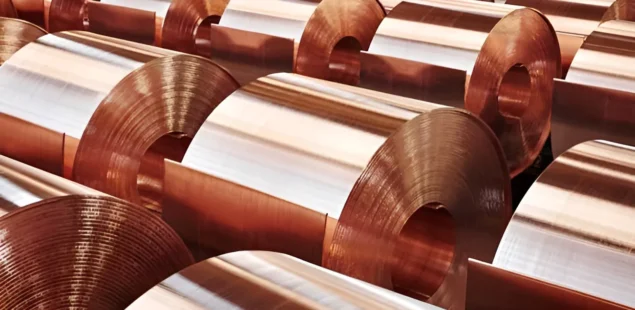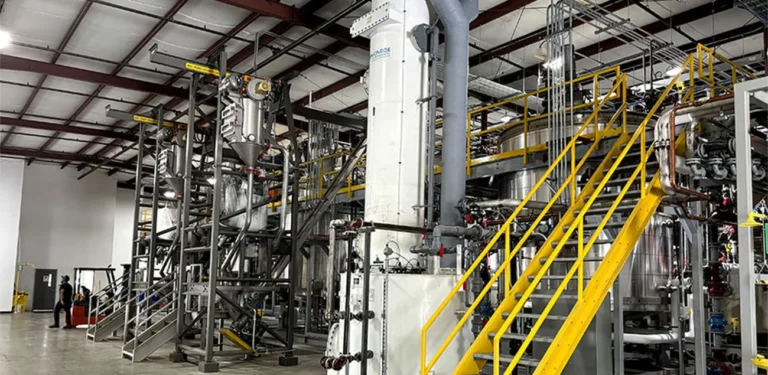
U.S. Investigates Copper Import Dependence Amid National Security Concerns
The U.S. Department of Commerce is set to assess the national security implications of copper imports, following a directive from President Donald Trump. The investigation aims to determine whether protective measures are necessary for the American copper industry.
Currently, the U.S. produces 850,000 tonnes of refined copper annually, of which only 40,000 tonnes come from ore, with the rest derived from scrap and waste. Meanwhile, copper imports have surpassed 800,000 tonnes, growing steadily over the years. According to the U.S. Geological Survey, refined copper imports reached 676,000 tonnes in 2020 and are projected to rise to 810,000 tonnes in 2024.
While U.S. copper consumption has slightly declined from 1.68 million tonnes in 2020 to an estimated 1.6 million tonnes in 2024, the country remains heavily reliant on imported copper, primarily from Chile, Mexico, Canada, and Peru.
Domestic copper production is limited due to factors such as depleted reserves, high electricity costs, and opposition from indigenous communities and environmental groups. No new copper mines or processing facilities have been built in the U.S. in the past decade, further entrenching import dependence.
Impala Platinum Faces Challenges Amid Declining Palladium Prices
South African mining company Impala Platinum is evaluating options for its Impala Canada mine, including an early closure, due to persistently low palladium prices. The mine, formerly known as North American Palladium, was acquired in 2019 for approximately $1 billion and has an annual production capacity exceeding 200,000 troy ounces of palladium.
Global palladium prices have declined significantly, falling from a peak of $3,440 per troy ounce in March 2022 to around $921 per troy ounce in 2025. As a result, Impala Canada's production in the first half of fiscal 2025 is expected to reach 116,000 tonnes, while Impala Platinum's profits have dropped by 43% to $100.23 million.
Other palladium producers, including Sibanye Stillwater, Anglo American Platinum, and Northam Platinum, are facing similar challenges due to weak market demand. Despite the downturn, Impala Platinum CEO Nico Muller remains cautiously optimistic, suggesting that palladium prices could rebound in the future due to potential shortages and the anticipated growth of hydrogen fuel cell vehicle production.
Rusal Expands into Scandium Production
Rusal is set to commence scandium oxide production at the Bogoslovsky aluminium smelter by the end of 2025, with an initial capacity of 1.5 tonnes per year and a planned expansion to 19 tonnes per year.
The project, requiring an investment of $5.6 million, will extract scandium oxide from red mud, a byproduct of alumina production. The Bogoslovsky facility generates between 1.6 and 2.6 million tonnes of red mud annually, with scandium oxide recovery rates of up to 20% per tonne.
Rusal previously ventured into scandium production in 2014 at the Urals Aluminium Smelter but discontinued the project in 2020 due to declining demand amid the aviation sector’s slowdown during the pandemic.
The global scandium market is estimated at 40 tonnes per year, with major producers including China, the Philippines, and Kazakhstan. Prices have risen in recent years, with scandium costing $150–155 per gram in 2024, up from $130–135 in 2020. The price of aluminium-scandium alloys has also increased from $335–340 per kilogram in 2020 to $360–370 in 2024.
Scandium is primarily used in aluminium-scandium alloys for aerospace applications. Rusal’s renewed focus on scandium production is likely tied to the anticipated growth in aircraft manufacturing, as well as its expanding applications in electronics, medical technology, solar cells, and X-ray mirrors.
Hindustan Zinc Aims to Double Production by 2030
Hindustan Zinc has announced plans to increase its annual zinc output from 1.1 million tonnes to 2 million tonnes within five years. This expansion will be driven by increased automation, digitalization, and artificial intelligence integration across the production chain, from ore extraction to metal refining.
Since 2019, Hindustan Zinc has pursued an investment program to raise production capacity, with initial targets set at 1.5 million tonnes by 2024. The company has implemented remote telematics control systems for underground mining and has integrated robotics into the smelting process. Capital investment in these initiatives has reached approximately $1 billion per development phase.
India’s zinc consumption is currently around 1.5 million tonnes per year, largely supplied by Hindustan Zinc. Demand continues to grow, particularly in the construction and automotive sectors, where zinc-coated steel is widely used.
However, India's reliance on imported galvanized steel products has led the government to impose protective tariffs. In 2022, anti-dumping duties were levied on hot- and cold-rolled electro-galvanized steel imports from Japan, Singapore, and South Korea, ranging from $16.05 to $79.73 per tonne, with a five-year validity period.
Rio Tinto Finalizes $6.7 Billion Acquisition of Arcadium Lithium
Rio Tinto has completed its $6.7 billion acquisition of Arcadium Lithium, significantly strengthening its position in the global lithium market. The acquisition expands Rio Tinto’s lithium portfolio, which already includes the Rincon project in Argentina and the Jadar project in Serbia. Arcadium Lithium’s assets span Australia, Canada, the U.S., and Argentina.
Following the acquisition, Rio Tinto is projected to control 10% of global lithium supply by 2030, ranking among the leading lithium producers alongside Albemarle and SQM. The lithium market outlook remains positive, with demand expected to rise significantly due to the expansion of electric vehicle production and energy storage systems.
Arcadium Lithium’s production capacity is projected to increase by 78% in the coming years. In February 2025, Rio Tinto commissioned Australian engineering firm Worley to manage the construction of a lithium production facility at the Rincon project. The $2.5 billion project includes $500 million in planned expenditures for 2025, with a targeted annual output of 60,000 tonnes of battery-grade lithium carbonate.
Despite these developments, Rio Tinto’s Jadar project in Serbia remains uncertain due to environmental concerns and opposition from local communities. The Serbian government faces a balancing act between attracting foreign investment and addressing public resistance to lithium mining.



